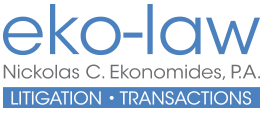How to Protect Your Business Intellectual Property: Patents, Trademarks, and Copyrights
In today’s competitive market, protecting your business’s intellectual property (IP) is more important than ever. Intellectual property refers to creations of the mind—such as inventions, designs, logos, and brand names—that have value and are integral to the success of your business. Without proper protection, your ideas, products, and services could be at risk of theft, misuse, or imitation. In this guide, we’ll explore the essential IP protections every business should consider: patents, trademarks, and copyrights.
1. Understanding Intellectual Property
Intellectual property (IP) is a category of legal rights that grant creators and businesses exclusive rights to their innovations, creations, and branding. These rights allow you to control how your intellectual property is used, protect your competitive edge, and avoid costly infringements. There are three primary types of intellectual property protections:
- Patents
- Trademarks
- Copyrights
Each of these plays a unique role in safeguarding different aspects of your business.
2. Patents: Protecting Your Innovations
A patent grants exclusive rights to an invention, preventing others from making, using, or selling the invention without your permission. Patents are typically granted for new products, processes, or technological inventions that offer a unique solution to a problem.
Types of Patents:
- Utility Patents: For new inventions or functional improvements to existing products.
- Design Patents: For new and original designs of products, including decorative elements.
- Plant Patents: For new varieties of plants that are asexually reproduced.
How to Protect Your Invention with a Patent:
- Conduct a Patent Search: Before filing, ensure your invention is unique by performing a patent search to confirm that it hasn’t already been patented.
- File with the USPTO: In the United States, you must file your patent application with the U.S. Patent and Trademark Office (USPTO) for protection.
- Maintain Secrecy: Keep your invention confidential until your patent application is filed to avoid public disclosure before your patent is granted.
Tip: Patents can be expensive and time-consuming to obtain, so it’s crucial to consult with an IP attorney to ensure your invention is truly patentable and that the application process is properly handled.
3. Trademarks: Protecting Your Brand Identity
A trademark protects the distinctive symbols, names, logos, or other identifiers that represent your business. This legal protection ensures that consumers can distinguish your products or services from those of competitors. Trademarks are essential for building and maintaining brand recognition.
Types of Trademarks:
- Word Marks: The name of your business, product, or service.
- Design Marks: Logos or symbols associated with your business.
- Service Marks: Similar to trademarks, but they apply to services rather than products.
- Collective Marks: Used by a group or organization to distinguish goods or services.
- Certification Marks: Used to indicate that a product meets certain standards or criteria.
How to Protect Your Brand with a Trademark:
- Choose a Strong Mark: Ensure your trademark is distinctive and not too similar to existing marks. Generic or descriptive names are harder to protect.
- File with the USPTO: Register your trademark with the USPTO to gain nationwide protection. Trademark registration allows you to use the ® symbol and provides legal grounds to prevent others from using your mark.
- Monitor and Enforce Your Rights: Regularly check for any infringing use of your trademark and take action to enforce your rights.
Tip: Even if you don’t register your trademark, you still have some protection under common law. However, registering provides stronger legal rights and helps deter others from using your mark.
4. Copyrights: Protecting Your Creative Works
A copyright protects original works of authorship, such as literary, artistic, and musical creations. Copyright protection automatically applies when an original work is created and fixed in a tangible form. This means your business’s creative works, like articles, software, designs, and marketing materials, are protected from unauthorized reproduction or distribution.
Types of Works Covered by Copyright:
- Literary Works: Books, articles, blog posts, and other written content.
- Artistic Works: Photographs, paintings, and other visual art.
- Musical Works: Songs, compositions, and sound recordings.
- Software and Websites: Original code, website designs, and applications.
How to Protect Your Creative Works with Copyright:
- Automatic Protection: Copyright protection is granted as soon as the work is created and fixed in a tangible medium, such as writing it down, recording it, or uploading it.
- Registration with the U.S. Copyright Office: While copyright protection is automatic, registering your work provides additional legal benefits, such as the ability to sue for statutory damages and attorney’s fees in case of infringement.
- Use Copyright Notices: Include a copyright notice (©, year of creation, and your name) on your work to deter infringement.
Tip: Keep detailed records of the creation process and any drafts of your work to establish clear evidence of ownership.
5. Why You Need a Comprehensive IP Strategy
While patents, trademarks, and copyrights each protect different aspects of your business, they all work together to provide comprehensive protection for your intellectual property. A solid IP strategy ensures that your innovations, brand, and creative works are safeguarded and allows you to monetize your IP effectively.
Key Steps in Building Your IP Strategy:
- Identify Your Intellectual Property: Start by identifying the valuable intellectual property your business owns, including inventions, trademarks, designs, and creative works.
- File for Protection: Apply for the appropriate patents, trademarks, and copyrights to protect your assets.
- Monitor and Enforce: Keep track of your IP and take action against infringements, whether it’s through cease-and-desist letters or legal action.
- Leverage Your IP: Consider licensing or selling your IP to generate revenue or build partnerships.
Tip: Work with an experienced IP attorney to create a strategy that aligns with your business goals and ensures maximum protection of your intellectual property.
Schedule Your Free Legal Consultation with Eko Law Today
Protecting your business’s intellectual property is essential for maintaining a competitive edge, safeguarding your innovations, and building a strong brand. Patents, trademarks, and copyrights each offer unique protections for different aspects of your business, and when used together, they provide comprehensive coverage. At Eko Law, we specialize in helping businesses protect their intellectual property. Contact us today to discuss how we can help you secure the rights to your creations and innovations.
Contact us now to discover how Eko Law can be the key to unlocking your business’s full potential.







